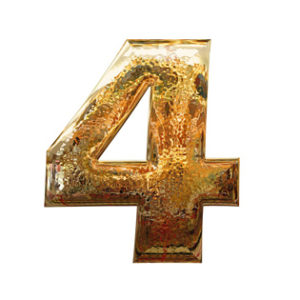 Brand storytelling is a hot topic these days but most marketers don’t know how to craft a compelling brand story. Unless you’re one of the marketers who actually took a creative writing class in college and you still have your copy of William Zinsser’s On Writing Well (yes, I still have mine), storytelling can be challenging.
Brand storytelling is a hot topic these days but most marketers don’t know how to craft a compelling brand story. Unless you’re one of the marketers who actually took a creative writing class in college and you still have your copy of William Zinsser’s On Writing Well (yes, I still have mine), storytelling can be challenging.
To help you get started in developing stories for your own brands, here are the five key elements that every great brand story needs to have. Without this elements, it will be very difficult for audiences to connect with your story or your brand, and that means lower results and lower profits.
1. Identifiable Character
All great stories have a primary character who the audience can relate to and identify with. The audience roots for him or her as the story progresses. For a brand story, your primary character could be a customer, but make sure the customer is one that your target audience will actually want to succeed in overcoming the story’s conflict (see #2 Problem / Conflict).
2. Problem / Conflict
A great story has a core conflict that the main character must face and overcome. For a brand story, the core conflict can be a problem that your product or service can solve for consumers.
3. Beginning
The beginning of a great story offers the information that the audience needs to identify with the primary character, visualize his or her surroundings (i.e., the story’s setting), and understand why the core conflict matters to him or her (and to the audience). For a brand story, use the beginning as an opportunity to set up the story. However, don’t fall into the trap of getting too detailed in the beginning and slowing the pacing down so much that the audience gets bored and stops reading (or listening or watching) before the story really gets going. Be compelling from the start.
4. Middle
The middle of the story is where you can get more detailed. Since you’re writing a brand story, this is where you need to look for opportunities to create situations, settings, and secondary characters that lead your primary character through to the climax followed by the resolution of his or her core conflict (see #5 End).
5. End
The end of your story should provide resolution to the primary character’s core conflict, which should mirror or seamlessly translate to a solution to the audience’s problem that your brand, product, or service provides. You can mention your brand, products, or services directly or indirectly at the end of your brand story. Just be careful not to turn your interesting brand story into a self-promotional piece. If the brand story you create is compelling enough, sales will increase organically without any heavy-handed sales language.
Do you write brand stories? What do you think are the key elements of a great brand story? Share your thoughts in the comments below.
Image: Aman Anderson
Susan Gunelius is the author of 10 marketing, social media, branding, copywriting, and technology books, and she is President & CEO of KeySplash Creative, Inc., a marketing communications company. She also owns Women on Business, an award-wining blog for business women. She is a featured columnist for Entrepreneur.com and Forbes.com, and her marketing-related articles have appeared on websites such as MSNBC.com, BusinessWeek.com, TodayShow.com, and more.
She has over 20 years of experience in the marketing field having spent the first decade of her career directing marketing programs for some of the largest companies in the world, including divisions of AT&T and HSBC. Today, her clients include large and small companies around the world and household brands like Citigroup, Cox Communications, Intuit, and more. Susan is frequently interviewed about marketing and branding by television, radio, print, and online media organizations, and she speaks about these topics at events around the world. You can connect with her on Twitter, Facebook, LinkedIn, or Google+.


